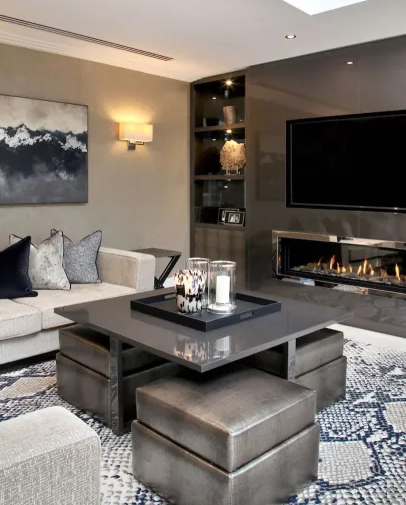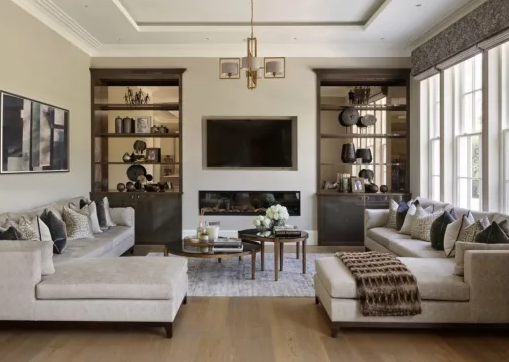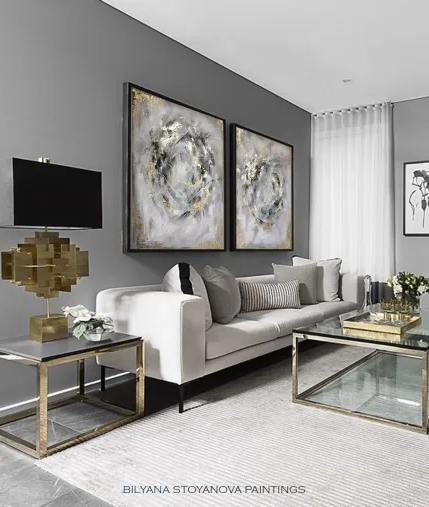Going Neutral
When interior designers talk about neutral colours in modern interior design, what do we actually mean? In the context of interior design, neutral literally means “without colour”. Colours such as beige, black, brown, grey and shades of white appear to have no colour however, many of these hues have undertones and it is extremely important to be aware of undertones when you start to use neutral colours in your home interior.
Undertones can be yellow, pink or green which give the neutral colour a specific tone. If you start to mix these undertones, you can start to make things seem yellower or darker in colour than you intended.
Image credit: Hill House Interiors
Why use neutral colours in your home?
There are many benefits for using neutral colours in your home interior that extend beyond just being “boring”. Often as designers we hear clients wanting us to create exciting, interesting interiors which doesn’t always have to come with copious amounts of colours.
Some great benefits of using neutral colours in your home are:
Neutral colours are visually restful
Good with patterns and textures
Timeless colour palettes
Adaptable to working with accent colours
Image credit: Your Space Furniture
The all-neutral room
If you are looking to go for an all-neutral scheme in your home interior, it is essential to layer different tones of a similar colour together to ensure you create a classy, sophisticated look. If you don’t take this approach, you can risk creating a flat, dull space opposed to a room that is harmonious in colour. You can choose a darker shade for the walls which darker furniture, flooring and lighting. Be sure to follow the same undertone in neutral colours throughout to avoid creating colour clashes.
Utilise your interior decoration accessories to tie the final room together and pull in darker and lighter neutral shades to compliment the overall scheme. Natural elements such as wood, brick and stone really benefit from an all-neutral scheme as they make a warm statement in an understated, elegant space.
Image credit: Bilyana Stoyanova Paintings
Neutral as a backdrop
Using neutral colours as a backdrop in your home interior is a great way to pull adaptable pops of colour into your scheme that aren’t too permanent. Some clients like to have a “winter” and “summer” scheme where they can change their accessories and accent colour to suit the season and a neutral backdrop is the perfect approach to achieve this.
Start with neutral colour on the walls. Ensure you chose the neutral colour based on the other colours you’d like to use in the space. Evaluate the amount of natural light in the room and whether you have a preference for lighter or darker walls – remember to always think timeless and that darker colours are designed to make spaces feel smaller and cosier. If your room is big and bright you have the pick of any approach – which sometimes isn’t the easiest thing! If your room is small and dark, a lighter neutral colour is likely to be your better option.
Grey as a colour has numerous tones so if you are considering grey as your backdrop, you need to decide whether you prefer a warm or cool shade and the same goes for white. Once you’ve decided on your neutral backdrop colour, start to think about the accent colours you’d like to introduce for the interior decoration. If you are looking for an adaptable space, go for neutral tones for the furniture, flooring and upholstery. Introduce a bolder, brighter accent colour through your accessories and window treatments such as cushions, lamp shades, rugs, curtains and blinds.
Image credit: Style at Home
Inky blue is beautiful, deep, jewelled colour that can be used and styled in so many ways in modern interior design. This exceptional colour is effective in any home interior when used with thought.
Georgina, Owner, COCO Interior Design





